



.jpg)
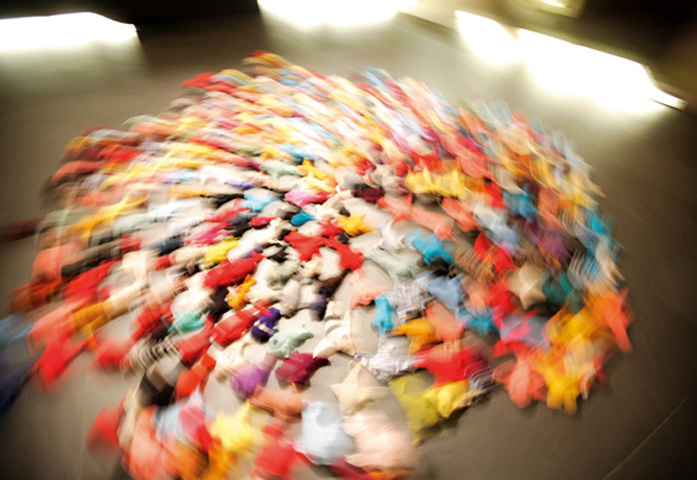
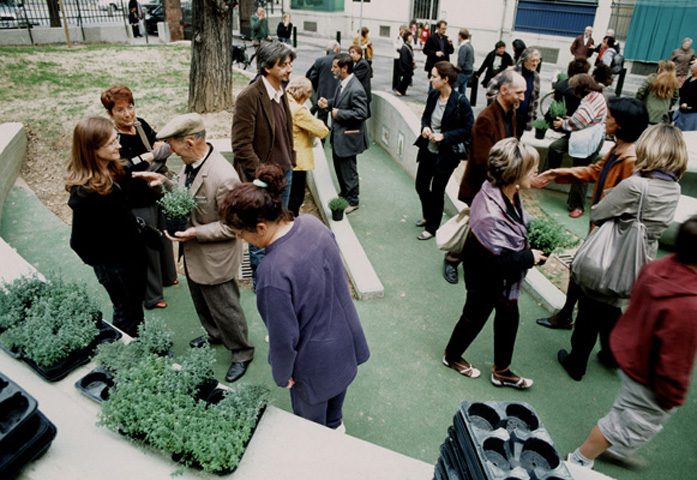
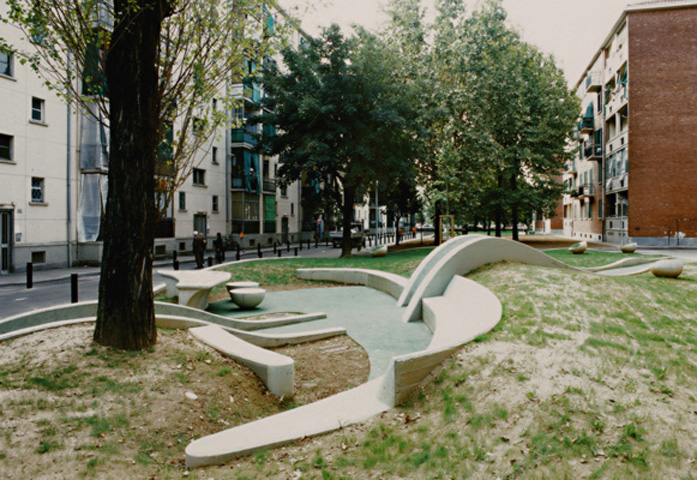
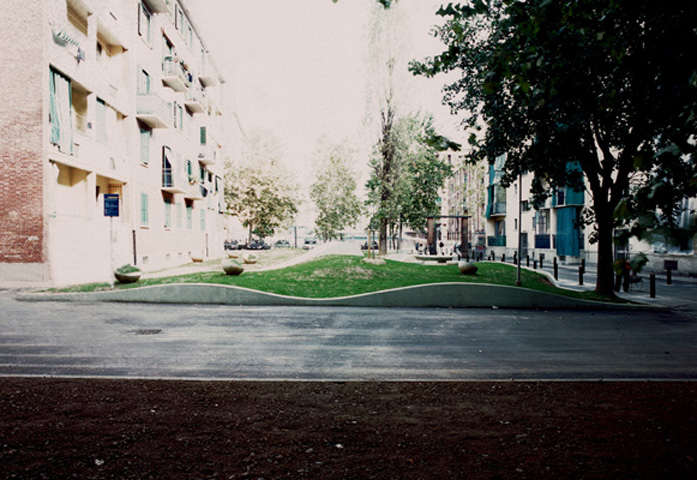

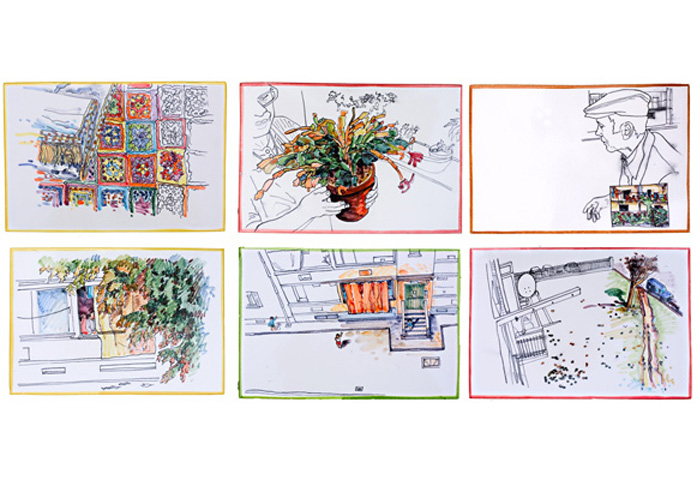




.jpg)






Claudia Losi was born in Piacenza, northern Italy in 1971, and while her work spans continents, she continues to live and generate art where she was born and raised. Working on the seamline between community projects, performance, ritual, and gallery art, she explores the concept of story-telling through art, often using her inquiries to link and create new communities of human interaction. Losi is interested in the natural sciences as well as in the historical and anthropological aspects of phenomena; her approach can be seen as an "ecology of art," rather than art about ecology. She has recently shown work in Modena, Turin and elsewhere throughout Italy, as well as at the Royal Academy, London, the United Arab Emirates, and more.
Her stay at the Dead Sea was planned in advance, and included tours of the Dead Sea Works, Massada and Ein Gedi, and meetings with geologists and other specialists familiar with the climatic and historical aspects of the place. This research will contribute to new work Losi is planning on the relationship between the pace of ecological and political change in the region.
2002-2010
12 Locations, Italy, England, South America
Inspired by a story of whale bones found in the 19th Century in the mountains of northern Italian where she grew up, Claudia Losi produced a life-size, anatomically correct fin whale made of Cashmere, and sent it around the world for an on-land journey between various exhibition spaces and a wide range of related and extended community collaborations.
The whale traveled in Italy, England and South America. At each station, Losi used the mammoth creature -- with its epic, mythical connotations -- as a trigger for communal storytelling, learning and ritual. In the course of the journey, Losi interrogated the natural history of the whale, as well as its tumultuous relations with the human community. The whale's presence received different emphases in different locations, accruing a variety of cultural interpretations along the way. In Birmingham England (at Erdington), school children drew hundreds of small whales which were later used as patterns by community seamstresses who sewed little fabric whales. In Ecuador, in villages 4000 meters above sea level, dozens of local knitters produced a thousand colorful woolen whales after local children's drawings. In other settings, clay sculptures, collaborative performances and voice work accompanied the whale's presence.
The whale's trajectory, from a once-demonized creature which was cruelly hunted to a protected species discovered to be highly intelligent and social, offers rich ground for Losi's central interests as an artist – the relations between earth and water, and between human and non-human creatures. In the gallery, the whale's enormity squashed into human-sized spaces offers itself up as an absurdity; at the same time, it invites viewers to walk around it and touch the yielding, silky surface, rather like that of a well-tended and well-behaved domestic animal. The tension between the two approaches generates sensory wonderment; time, meanwhile, is slowed down and stretched like the animal's skin.
The whale's eight-year-long excursion came to an end in October 2010, in a 24-hour performance ritual in an ex-wool factory in northern Italy, the very region where the project was born. InLes Funerailles de la Balein, the whale was dismantled and its many parts were ceremoniously rededicated as men's jackets and fashionable bags. (These have since been exhibited at theAware -- Art Fashion Identity exhibition curated by Gaby Scardi and Lucy Horta at the Royal Academy in London. ) The performance included original music written and performed by singer songwriter Vinicio Capossela, and a grand funeral procession.
Transatlantic Flowerbed
2008
Turin
In this singular project, Claudia Losi combined artistic, sociological and architectural practices to facilitate dialogue and create connections among various sets of residents in a low-cost housing development in Turin. The neighborhood, which initially served workers of a local automobile factory, was split between long-time residents, migrant new-comers, and an unstable, transient population, all of whom share large courtyards.
With a municipal renovation plan in the background, Losi was invited to create a collaborative project in one of the shared yards. To begin with, she met some thirty residents, interviewed them regarding their private histories and daily lives, listened to their vision of the shared courtyard, and photographed the view of the communal space from their windows. Weaving geography and history together in line with her on-going artistic practice, she transcribed their stories and views into line drawings on fabric and gave them back to the inhabitants to hang from their windows and verandahs for their neighbors to see. This step reversed relations between the interior and exterior, and granted community members an opportunity to learn a little about their neighbors and their views of the shared courtyard. The maneuver also made the yard freshly visible, and led the way towards a shared discussion regarding its future.
The second part of the project included joint planning for the yard with the tenants, and the realization of their design. Planning sessions highlighted residents' wish for a safe, restful area that would allow for conversation and provide play space for children. The neighbors chose to renew the entry to the courtyard, a threshold which would also be seen outside the development, and would engender a sense of harmony and security for the entire residence. It was planned as a set of artificial slopes traversed by two pathways, the residents' shortest routes across the yard.
The project functions as a restorative island for the residents. The courtyard is segregated from the immediate environment, and attempts to generate a new kind of dialogue between residents and their surroundings, as well as among themselves. Losi uses the prestige of the art work to guard local residents' wishes for and interest in their shared courtyard, where play areas and rest areas merge into one another in this artificial topography, which looks organic. As Losi writes: "The movement of the earth of this 'floating garden' takes the form of a flowing mantle, which will eventually be covered with grass… the table inlaid with leaves, the seats embedded in the earth.. [all part of the] great hemispheres into which animal and vegetable forms are carved."
New Patrons, promoted by Adriano Olivetti Foundation, Rome, and Urban2, Mirafiori Nord, Turin.
Cultural mediators: Luisa Perlo and Lisa Parola (a.titolo), Turin.